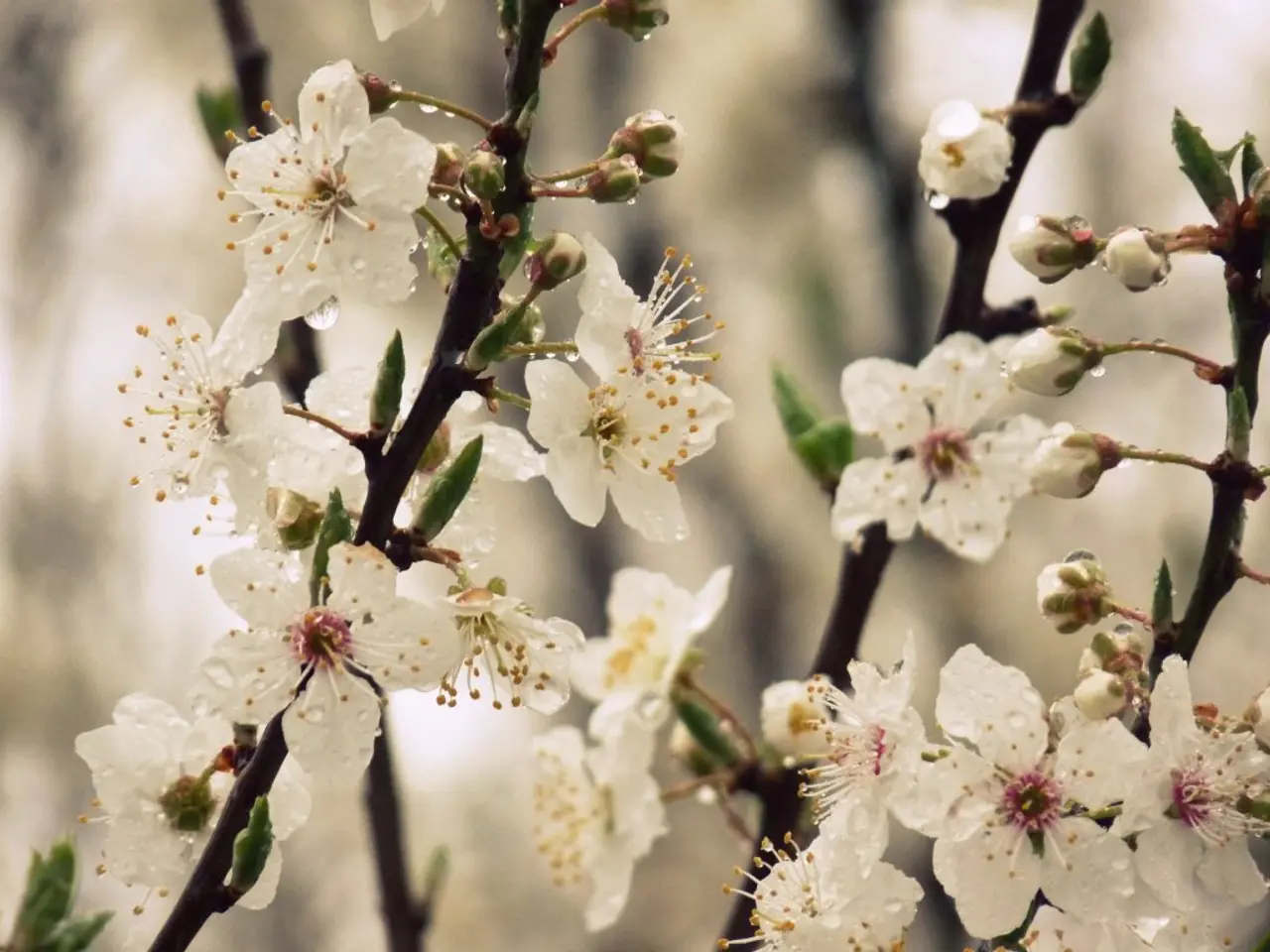Giant hogweed identifies as an invasive, harmful plant species that originated in Central Asia. It has a towering height and ominous white flowers, causing severe skin burns and blindness upon contact.
The invasive plant species, Giant Hogweed (Heracleum mantegazzianum), poses a significant threat to both the environment and human health. Known for its distinctive appearance and hazardous sap, this towering non-native weed requires careful management and disposal.
Giant Hogweed grows to impressive heights of 2-5.5 meters, with a thick, bright green stem marked by dark reddish-purple spots and coarse white hairs at the base of the leaf stalk. The large, deeply lobed and serrated leaves resemble those of a fern, and the plant produces large umbrella-shaped flower heads up to 80 cm across, filled with tiny white flowers from late spring to mid-summer.
One of the most hazardous aspects of Giant Hogweed is its phototoxic sap, which can cause severe skin burns when exposed to sunlight. To minimize the risk of burns, it is essential to wear protective clothing, including rubber gloves, rubberized raingear, and eye protection, especially when handling the plant or removing it. Removal is safest on cloudy days to minimize sap activation.
Effective control of Giant Hogweed begins with early identification and swift action. The easiest control is to pull young plants before they mature and produce seeds. Immediate containment of all plant material is necessary to prevent spread. Cutting flower heads before seed set in summer helps limit seed distribution. Seeds can remain viable in soil for several years, so ongoing monitoring and removal of seedlings is essential for multiple years after mature plants are treated.
Due to the risks associated with Giant Hogweed, many authorities advise hiring professionals for removal. Reporting sightings to local invasive species organizations can also facilitate coordinated management efforts. Disposal of the plant material requires strict protocols. Do not burn or compost giant hogweed due to the toxic sap. Instead, place all plant material in sealed black garbage bags to dry completely until seeds are no longer viable before disposal.
Giant Hogweed is regulated as a noxious weed in many regions, including the EU, UK, and the US, with legal restrictions on its cultivation and spread. Long-term control includes monitoring known infestations, community reporting, and public education.
It is important to note that Giant Hogweed is poisonous to dogs and can cause severe skin burns, abrasions, mouth ulcers, vomiting, and diarrhea. If you find Giant Hogweed growing on council-owned land, report it to the council's website dedicated to reporting invasive, non-native species. If you find it growing on a railway line, embankment, or station, report it to Network Rail.
In conclusion, controlling Giant Hogweed involves early identification, careful removal with protective gear, prevention of seed spread, proper disposal of plant material, and ongoing site monitoring to fully eradicate this hazardous invasive species.
In the campaign for health-and-wellness, it's crucial to educate the public about the dangers of the invasive Giant Hogweed. This tall, toxic plant, which can cause severe skin burns and pose threats to both the environment and domestic pets, requires careful fitness-and-exercise when handling and removing it, adhering to nutritional safety measures such as wearing protective gear, and disposing of the plant material correctly by following strict protocols.




